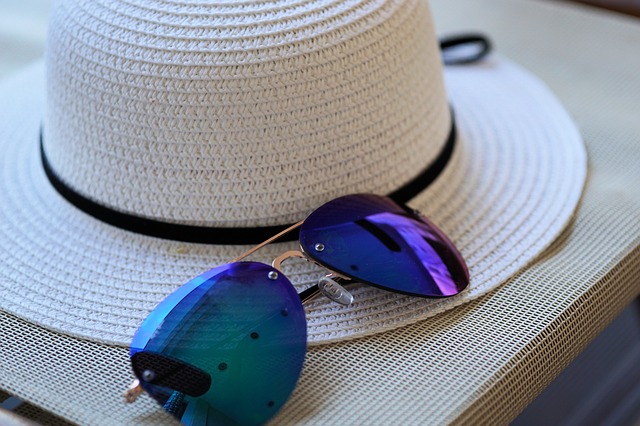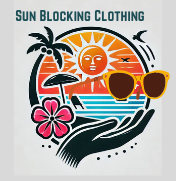
Will UPF wash out of Sun Ptoctive Clothes?
It is really kind of nitpicking to remind you that the letters that stand for the protection of clothing are UPF. SPF is used for sunscreen’s protection. The main thing to remember is to protect your skin. Start with a hat and sunglasses. These are basics and should be at the top of any skin protection clothing list.
In fact, that is a weak point of sunscreen protection. Because water will dilute its ability to protect your skin from the sun. You do have to reapply often when in and out of the water. By adding some Sun Blocking Clothing to help where your sunscreen disappears from, you will be doing your skin a great favor. Too Much Sun For Your Family?
SPF for Sunscreen UPF for Clothing
With this bit of information in mind, your question should be, “Will the UPF wash out of clothing?” The answer is maybe it can. The rating is correct when it leaves the factory. These are ideal circumstances, and conditions, and the garment is brand-spanking-new.
Numbers advising you of how much protection will be on the labels. With 50 the highest used to measure UPF protection. Anything less than 30 is too little to offer enough help to allow them to claim any protection, according to most dermatologists.
What happens after you wear the UPF garment and need to launder it?
- If fabric has a finish or dye or ink or chemical to produce the UPF applied: The garment will have a guarantee to have a 50 +protection factor. Labels will tell you how much protection you will have with each garment. I am using the highest protection number that is used by today’s requirement.
The item also may have a label that states the protection lasts through 20 washing cycles if you will follow directions on the label.
The shirt gets worn a couple of times and you hand wash it in the lavatory sink 1 time while on your long weekend.
You have 19 times left of 20 washings cycles. Now there is only 95% of the protection for the next wearing. If this protection is a gradual loss, you will not notice, and it will be more difficult to know when the protection is all gone. Wearing a sun blocking shirt 20 times during the summer is reasonable. So here is a warning. As the summer passes, and your UPF is washing away, you are getting less protection.
Just an extra warning, your washing cycle before you wear the garment the first time will count as well!
UPF With Special Weaving Methods
Some manufacturers use a special method of weaving to get a fabric that will block the sun very effectively.
- Fabric with a special weave to produce UPF protection:
This garment is not coated nor does it have chemicals woven in during the process of creating the fabric. The way washing and wearing affect this kind of fabric are just in normal usage. Fabric will lose some of its ability to protect as it is used.
Think back to when you get a new towel. The first few times it goes through a wash cycle, it feels new, or almost new. However, as the summer progresses, that soft fluffy beach towel will feel thinner and not be so fluffy.
This is only natural and normal for the fabric to wear away. The weave will be less tight and sun proof. There will be little pinholes where the woven yarns go together. If you can see through the fabric in any way, sunlight can get in. Your UPF is washing away!
Coatings, Inks, and Dyes
The manufacturers can coat the surface of the fabric before creating clothing and is the most common way to add protection. This finish will have a laundry life length. Look at the label. You will find the information there for how many times the garment can go through a laundry cycle, along with directions.
Some garments are sprayed with a special chemical or with special inks that help protect from the sun after they are made. These will also have labels with their appropriate UPF rating and the information to care for the items as well
Sun Protection Factor resulting from the way the fabric is woven is another way to have garments with a UPF ability. The special weave can be for the shirt, hat, or other sun protection garment. This can produce a chemical-free way to protect your body from the sun.
Combination Of Weave And Other Treatments
If one is good, then two or more is better, right?
This could be the answer. Some manufactorers seem to have great confidence in the method they are using and state that they guarentee that the protection will remain at the 50 or higest level of protection available for the life of the garment.
Using special weaves that keep the fabric from loosing the protection through time seems diffucult to acheive, but they feel their methods do just this. Fabric Innovation
With the use of a special weave, plus the zinc oxide to scatter the ultraviolet rays that are so damaging for the skin. The extra step is to add dyes to divert the suns rays. This produces better fabric to give a longer life for your Sun Blocking Clothing.
For me as an adult who will hopefully not outgrow my Sun Blocking Clothing. This makes me feel better about investing in comfortable clothing to protect my skin from the sun.
UPF In Clothing
Ultraviolet Protective Clothing is clothing specifically for sun protection and is produced from a fabric rated for its level of ultraviolet (UV) protection.
Special weave structure and denier can produce sun blocking properties. In addition, some textiles and fabrics that are used to make sun protective clothing may be pre-treated with UV-inhibiting ingredients during manufacture to enhance their effectiveness.
In addition to special fabrics, sun protective clothing may also adhere to specific design parameters, including styling that will give full coverage of the skin most susceptible to UV damage. (This description of what the term UPF refers to in clothing manufacturing is from Wikipedia.)
Protecting Your Skin From The Sun
Most readers who are interested in UPF are interested to keep themselves safer in the sun.
Just as a good diet can help you be healthy and reach whatever weight goals you may have, you must stick to the diet to have its’ benefits. The same is true of Sun Protective Factor clothing. You must have the garment on your body. Between you and the sun.
Comfort is a very important part of a UPF garment. So search for comfort that you will wear and protect yourself.
Why UPF Is Important
To help protect your skin from the powerful UV radiation, UPF protection is the process of adding extra protection to your clothes. You want to be able to recognize the amount of protection you are getting from the information on the garment tags and labels.
Too much UV radiation can leave your skin with damage that will eventually allow skin cancers to develop. Skin Cancer Concerns
Another reason that UPF protection on and in your clothing is so helpful is that it doesn’t have to be reapplied every two hours or oftener. A word of caution, the garment may not protect as well when wet. Read and remember the information form the label. It will explain how this particular garment works and how it protects you.
You have to do your part by being aware and helping your UPF clothing work for you.
The Ultraviolet Protection Factor is a measurement for how much UV radiation – from UVB and UVA- a fabric allows through to your skin. If the UPF factor for your fabric says 50, it will block 98% of the sun’s rays. This means that only 2% or 1/50th of the rays get through the fabric to your skin.
This is a great thing for your skin’s health and well being. You are reducing your exposure risk by a significant amount. The Skin Cancer Foundation will only recognize a UPF of 30 or more as enough protection for you to use.
Protecting Your Skin From The Sun
Having some help to protect your skin from clothing with a UPF rating is a good idea. Remember, you do have to wear sun blocking garments for them to help.
To help you with your family as well as yourself and protecting your skin, comfort is very important. If your kids don’t enjoy the sun blocking shirts, they will take them off every time they get a chance. So comfort while you are wearing your UFP apparel is important.
You will need a complete approach to skin protection to make sure you are safe from too much sun. It only takes 15 minutes in direct sun time to start turning your skin red. Be careful.
Use sunscreen along with your UPF clothing. Remember the sun blocking hat to get the protection going at the top of your head. Your sunglasses. A sun blocking shirt. Sun blocking umbrellas and pop-up shades will all be important for sun protection.
Global Warming
How do you feel about global warming? Whether you agree or disagree with global warming, you will be dealing with the results of climate changes. One of the big ways we deal with the changes comes as our daily battle to protect our skin from the dangers of too much sun and the potential for developing skin cancer.
The disappearing Ozone layer has been my wake up call. I was blissfully roaming along with no idea of what was happening. Then our wakeup call came with the skin cancers began to develop on my kids’ skin.
My kids are adults, with families of their own. There is a history of sun exposure. They also have a Mom who did not know how to help them protect their skin.
You Must Be Aware
As the brighter sun days move closer keep yourself aware of how you are protecting yourself and your family. Yes, to the question, “Will SPF wash out of clothes.” So does some “UPF”
This artical was written to get you to thinking about when you should invest in the more expensive Sun Blocking Clothing. There may be practical problems of having good Sun Blocking Clothing for your growing family. The cost makes it difficult for most to have enough shirts for your family. Please see that your family is protected by some kind of clothing on their bodies.
They need to learn to protect themsleves, and habits start young. Something is better than nothing, so some kind of shirt is better than none at all.
As we become more aware of the dangers of the direct sunlight, limiting the time they are in the bright sun during the peak hours of 10 AM until 4 PM can go a long way towards protection as well.
